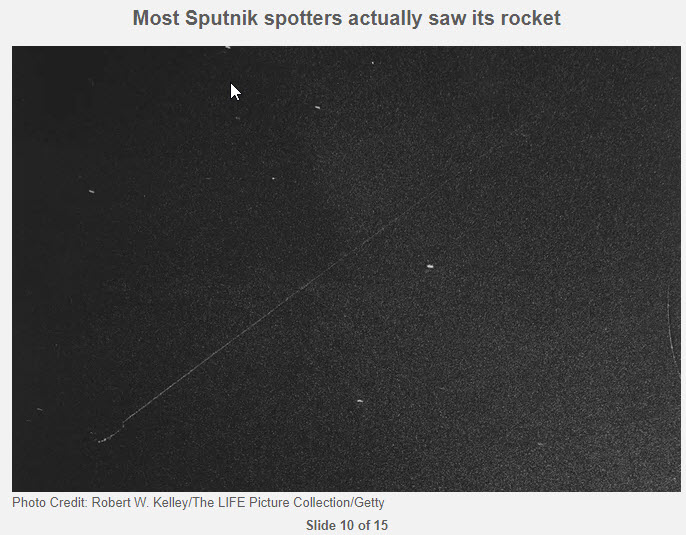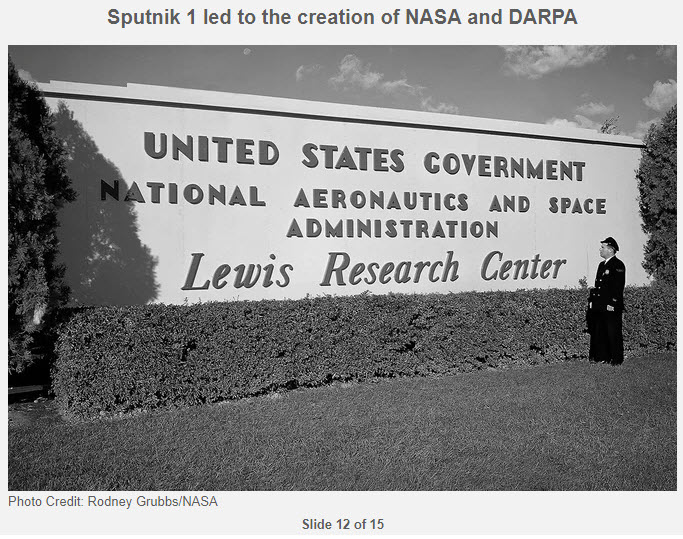Sputnik 1! 7 Fun Facts About Humanity’s First Satellite
By Mike Wall, Space.com Senior Writer | October 2, 2017 06:20pm ET
Sputnik 1 was the size of a beach ball
The Soviet Union had been aiming bigger
Sputnik 1 was lofted by an R-7 rocket, which consisted of four first-stage boosters — known as Blocks B, V, G and D — strapped onto a core second stage (Block A). During the launch, the Block G booster’s main engine reached its intended thrust levels later than expected.
“As a result, 6.5 seconds after the launch, the rocket started to pitch, deviating around 1 degree from the nominal trajectory 8 seconds after the liftoff,” Zak wrote. “In the effort to correct the increasing pitch angle, steering engines No. 2 and [No.] 4 on the core stage rotated as much as 8 degrees; similar engines on strap-on boosters of Block V and D rotated as much as 17-18 degrees, while tail air rudders rotated 10 degrees.
Sputnik 1 eventually settled into an elliptical orbit, which took the satellite as close to Earth’s surface as 142 miles (228 kilometers) and as far away as 588 miles (947 km). The satellite zipped around Earth every 96 minutes.
Its mission was brief

Sputnik 1 led to the creation of NASA and DARPA



